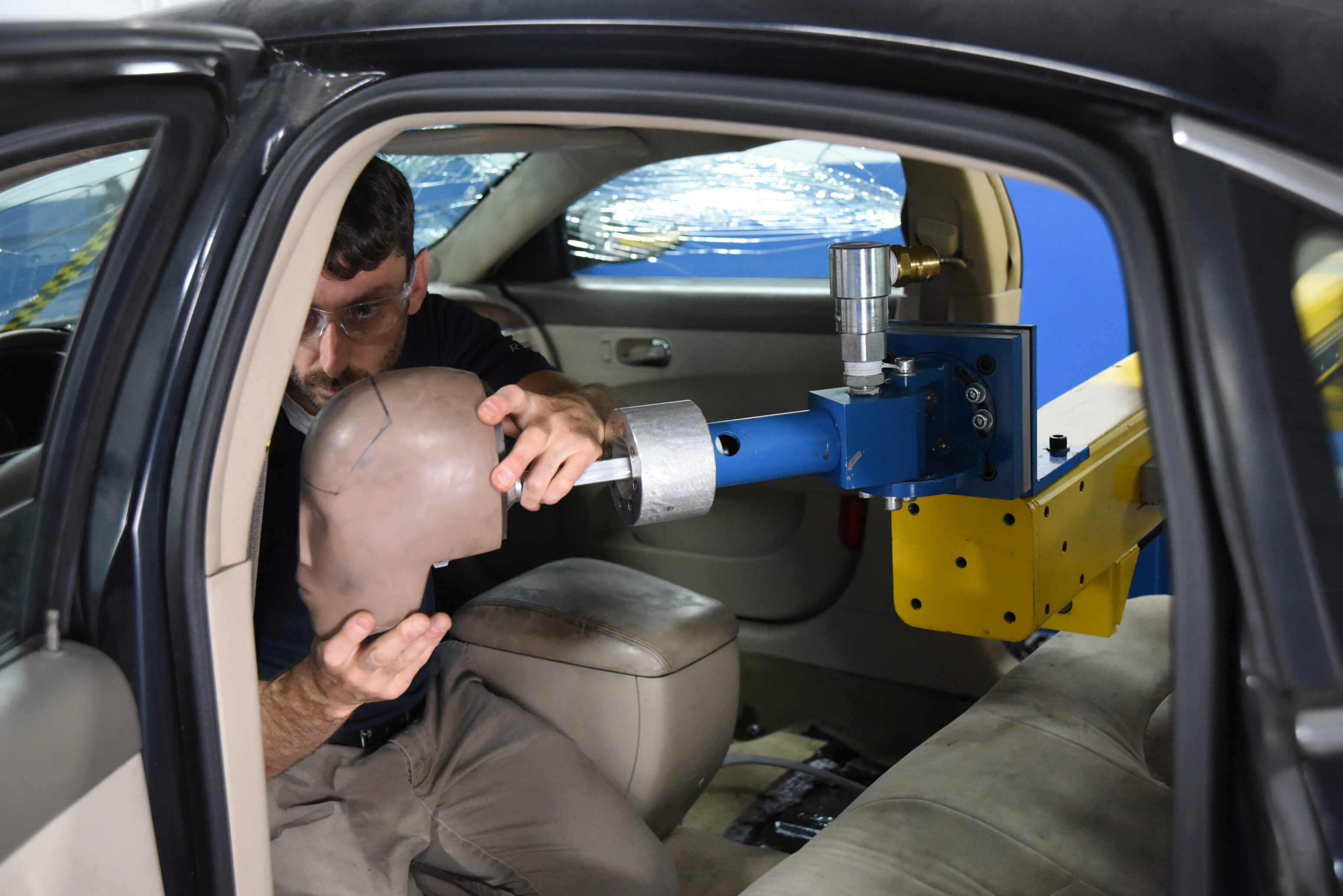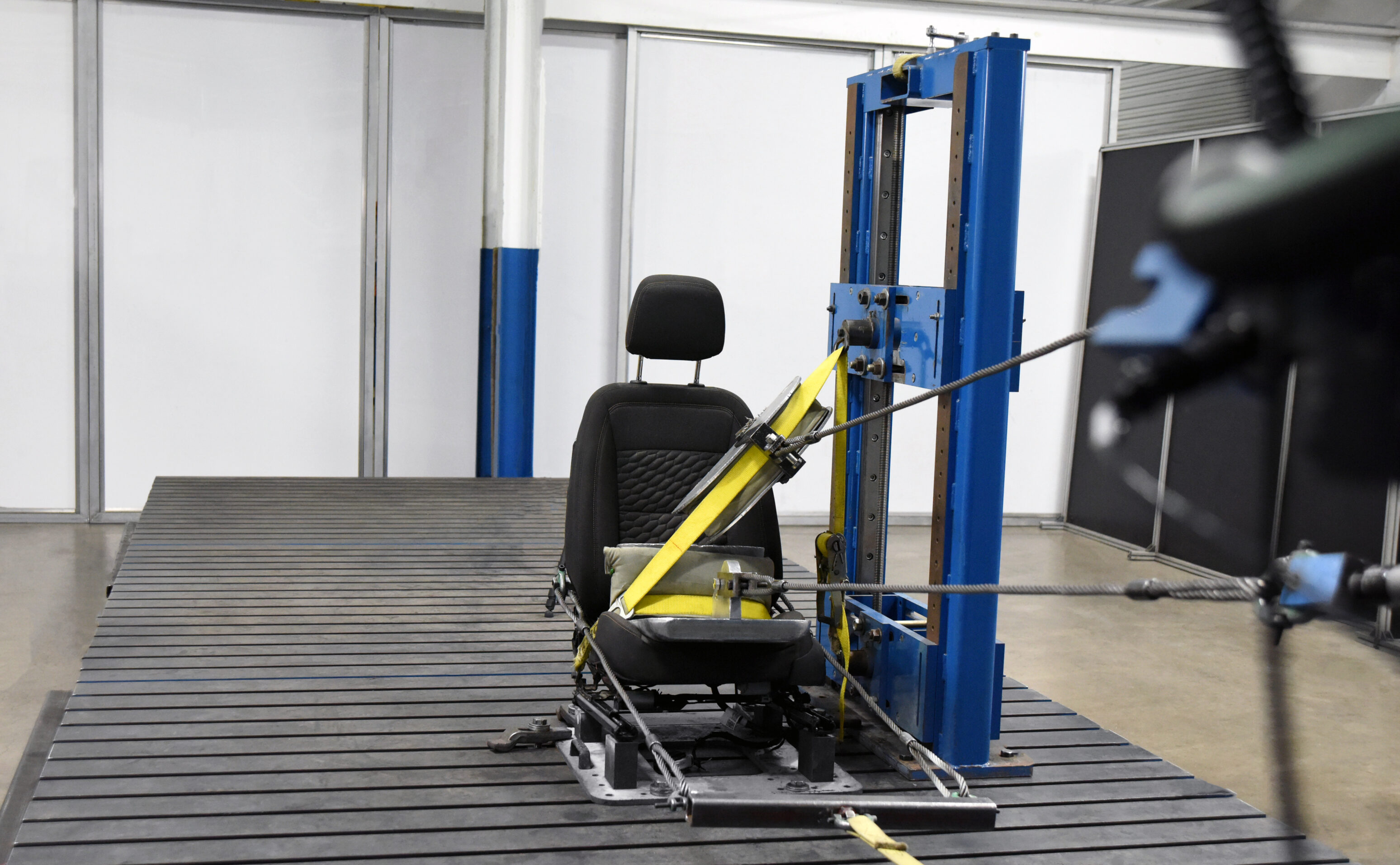In early 2022, MGA established our first California testing laboratory and since June of 2022, the capabilities related to our Phase 1 implementation have been fully offered to customers. A large portion of these offerings involve FMVSS 200 series component level tests and airbag deployments.
The FMVSS 200 series capabilities include:
- FMVSS 201, Occupant Protection in Interior Impacts, utilizes a variety of simulated head impact forms that strike various components inside the vehicle, such as the IP, Seat Back, or Pillars. Depending on the impactor, HIC or a 3ms clip of uniaxial acceleration are collected. The purpose of this testing is to evaluate head protection during a crash in a belted or unbelted situation where the airbag is not involved.

Occupant Protection in Interior Impacts Test Setup
- FMVSS 202a, Head Restraints, utilizes both a dynamic impactor and a quasi-static test system to evaluate the head restraints and seatback strength in a rear impact. Using the dynamic impactor, a steel spherical headform is propelled to impact the head restraint. Uniaxial acceleration is collected and the 3ms clip is evaluated. The quasi-static test system is used to perform Backset and Height Retention. In these tests, a backpan or headform is loaded into the seat to evaluate rigidity.
- FMVSS 207 and 210, Seating Systems and Seat Belt Assembly Anchorages, respectively are both conducted on the MGA Anchorage Frame. Often tested in tandem, these two standards evaluate the seats and seat belts during a quasi-static loading event. The intent is to prevent the anchor points from detaching from the vehicle body or from the seat itself.

Seating System & Seat Belt Assembly Anchorage Test Setup
- FMVSS 225, Child Restraint Anchorage Systems, follows the same principles of 207 and 210, but focused on the child seat anchors in the rear rows of a vehicle. These anchors must be able to withstand enough force to hold the child seat during a frontal impact event.
- FMVSS 226, Ejection Mitigation, also utilizes the dynamic impactor. The impactor launches a free motion head form into free flight aimed at side windows or sunroofs to prevent complete or partial ejection during a side impact or rollover event.
Beyond FMVSS component testing, the facility has been performing a significant volume of airbag deployments at ambient conditions as well as extreme hot or cold conditions with varying relative humidity. There are many factors at play to make sure that an airbag deploys just right to accurately protect the occupant. These factors can include how the airbag unfolds, how it interacts with the trim or other components around it during and after deployment, and production changes/quality processes.
During the planned opening of this new facility, MGA set out a phased approach to bring online several pieces of equipment and capabilities. Phase 1 was set to utilize approximately 20,000 sq ft of the 80,000 sq ft in the facility, leaving plenty of room for expansion in additional phases. As Phase 1 completed and our California business fully established itself, we have modified the items within Phase 2 and Phase 3 to better serve the current needs of our customers. A few of the upcoming capabilities include a Materials testing lab, a large expansion of our Lifecycle Durability offerings, and Hydraulic Strength & Durability capabilities.
Throughout 2023, we will be adding additional test systems/capabilities to the laboratory to address local customer needs. If you would like to get additional information for the CA office, please contact Alex Pinelli at alex.pinelli@mgaresearch.com

